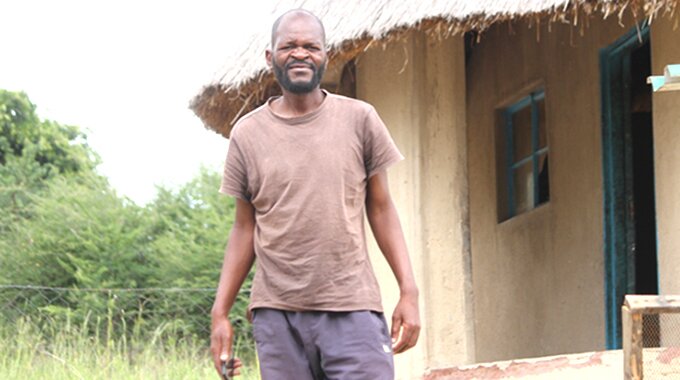Many at times Africans lose track because of lack of a solid historical base. We grow up aspiring to be something else, but not African. We teach the same kids the same ephemeral traits that sneer at everything African.
We grow up thinking that anything foreign or Western is nice, attractive, modern, sophisticated and something to emulate.
This is sad because it creates human beings that are not rooted on any base and are susceptible to brainwashing.
Yet, if we look back just a few years ago, we realise that we are a people with a rich history of valour that must inspire us to create a future based on our creativeness and ingenuity.
Our rich historical heritage must always form the bedrock of an inspirational spring board for future generations. It is the need for a reconnection with our rich historical heritage that has this week inspired me to focus on one African character that once strode this land between the Zambezi and Limpopo like a colossus.
Advertisement
This character is King Munhumutape, who Europeans wrongly referred to as Monomotapa.
Who was Munhumutape?
Writing in The Social Spotter of 1969, a Mambo Press publication, A. C Hodza, (then an Assistant in the Department of African Languages at the University College in Salisbury) describes King Munhumutape as a wealthy and versatile monarch.
Hodza takes exception with how Europeans referred to King Munhumutape as Monomotapa saying this was wrong and must be corrected.
“The correct name and spelling is Munhumutape, which means ‘banguranyika’ (an explorer of more than average standing, who in a way occupied lands). This in fact is what Munhumutape was,” write Hodza.
As a young man, Munhumutape is said to have come from the Congo as a young man from a tribe called the Balubakat tribe, the vicious tribe that made headlines in the early days of Congo’s independence.
With him was his aged father, Utahwengavi. Split into two, his father’s name referred to “uta” — a bow and “ngavi” is the name of a bird that lives in river banks.

An old picture of Munhumutape, first published in Paris by P. Betrand in 1650
This could be a pointer to the mystery of the Zimbabwe Bird.
Advertisement
Various historical sources state that earlier on, many years before, Mambo Munhumutape’s tribe had come from Guruuswa, somewhere in East Africa and in their worship ceremonies would always evoke their “God of Guruuswa, the God of our fathers”.
With a large following of people, King Munhumutape and his father traversed the great thick forests of the Congo and Zambia, and diverted to Malawi where they settled at Zomba for a few years.
This was around the 15th century and many people lost their original languages in the folding centuries.
The totem of the King Munhumutape and his people was Mbizi- Zebra, which was Tembo in Balubakat, Dube in Zulu, Punda-milia in Swahili, Chingalika or Imbishi in Lamba in Zambia, Njagi in Kikuyu, Kenya and Bholi in Tonga.
From Malawi they crossed into Mozambique around the Gorongoza area where the aged Utahwengavi later died. A brave, but kind-hearted leader, Mambo Munhumutape led his people into what is today Manicaland and settled at Binga mountain, now Bingaguru, the seat of the Mutasa chieftainship.
In this area, the Mutapes called their totem Tembo, which they later changed to Tembo Samaita. They were known for many years as Tembo Samaita until when they later reached Mashonaland in the area around modern day Marondera.
Meanwhile, King Munhumutape had left in Manicaland one of his trusted lieutenants called Mutasa. In Marondera, King Munhumutape set up another sub-chieftainship under Chivazwe who later changed his name to Chihota after enjoying tsenza, a well-known root crop grown in swamp areas, which had a curved shape that fascinated him and his people.
From Chihota, Mambo Munhumutape traversed through Mashonaland and settled in Hurungwe near Karoi. He and his people surveyed the area until they reached the Zambezi Valley where they discovered guvira (salt stone). A considerable salt industry developed and his people got busy extracting salt for sale to those who had remained behind.
In Hurungwe, King Munhumutape set up two new sub-chieftainships of individuals from his tribe. These were Dandahwa and Mujinga. By this time, a great multitude of people was following King Munhumutape mainly because of his popularity in the salt industry, but more so because of his generosity and good leadership.
G.M Theal says in his “Records of South Eastern Africa”, that King Munhumutape was full of charity towards the blind and the disabled whom he regarded as God’s people in need of care.
Advertisement
While extracting salt, King Munhumutapa sent out his people to prospect for minerals and reached the Chizhanje area later called African Chrome Mines.
Finding nothing special, he proceeded to Manda Mountain, now called Amandas later Concession, where he did not stay for long before settling at Chipindura Mountain (now Bindura).
His next stop was Tsamvi Mountain (later Shamva) from where he proceeded to Pfura Mountain (now Mt Darwin, renamed years later by the British hunter, Selous after his country’s 15th century philosopher, Charles Darwin.
At Pfura, King Munhumutape settled more or less permanently and learnt to mine and refine gold for sale. Here he met other human beings that were not of his tribe, the Mandionerakupi referred by Europeans as Hottentots with whom he became friends with.
Pfura Mountain itself had a well-known water spring at the top of it from which King Munhumutape and his people drew cool water. The spring is still there, but almost forgotten as people no longer live in mountains that were used as fortresses against enemy attacks.
Material for this article was obtained from various historical sources. Next week I will deal with how King Munhumutape created a vast gold industry becoming a gold magnet of his time.
– HERALD








